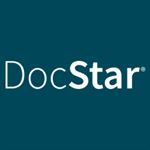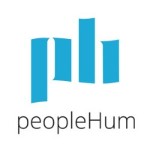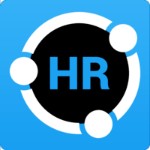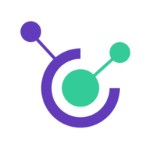If you’ve ever found yourself juggling the many hats of managing a team, you know it’s no small feat.
In today’s fast-evolving business landscape, managing your workforce effectively is more crucial than ever. That’s where workforce planning software swoops in, like a superhero for your HR needs.
So, let’s embark on this journey to discover how this real time resource management software can be a game-changer for your business.
The Ever-Changing Business World
We live in a world where change is the only constant. Industries are evolving at breakneck speeds, technology is advancing by leaps and bounds, and the way we work is continually shifting. In such a dynamic environment, traditional methods of workforce management just don’t cut it anymore. This is where workforce planning software becomes a beacon of hope, helping businesses navigate these changes with greater agility and foresight.
The Struggle of Modern Workforce Management
Let’s face it, managing a workforce can be like trying to solve a complex puzzle with constantly changing pieces. Balancing the right number of staff, with the right skills, at the right time, is no small task. Add to that the challenges of employee engagement, retention, and development, and it’s enough to make even the most seasoned managers break a sweat.
Enter Workforce Planning Software
This is where workforce planning software enters the scene, changing the game entirely. It’s not just a tool; it’s a strategic partner that helps you align your workforce with your business goals. This software goes beyond mere employee scheduling and headcount; it dives deep into data analysis, demand forecasting, and strategic workforce planning processes.
The Big Picture and the Fine Details
One of the most impressive feats of workforce planning software is its ability to zoom out for the big picture and zoom in on the fine details. It gives you a bird’s-eye view of your entire operation while also using in depth actionable data, allowing you to get granular with individual employee skills, performance, and development paths.
Why Every Business Needs This Tool
No matter the size of your business, whether you’re a startup taking its first steps or a multinational corporation, workforce planning software is essential. It’s not just for those in fast-paced industries but for project managers and anyone who wants to manage their team effectively, have accurate and current data, prepare for future changes, and make decisions based on solid data.
The Role of Technology in Workforce Management
In this digital age, technology plays a pivotal role in every aspect of business, and workforce management is no exception. Workforce planning software embodies this marriage of technology and management, providing solutions that are both innovative and practical.
The Journey Ahead
As we delve deeper into the world of workforce planning software, keep in mind that this is more than just a journey into operational data through a digital tool. It’s a journey towards transforming how you manage your most valuable asset – your people. So, buckle up, and let’s explore how this software can revolutionize your approach to workforce planning.
Key Points:
- Workforce planning software is a necessity in the rapidly changing business world.
- It addresses modern workforce management challenges with innovative solutions.
- Suitable for businesses of all sizes, this tool helps align workforce with business goals.
- It provides both a broad and detailed view of workforce capabilities.
- The software represents a crucial intersection of technology and workforce management.
- Our exploration will uncover how this tool can transform your human resource management.

What Is Workforce Planning Software?
Welcome aboard the exploration train! We’re about to dive deep into the heart of workforce planning software, a tool that’s revolutionizing the way businesses manage and optimize their human resources. So, let’s get the gears turning and uncover what this software is all about.
The Essence of Workforce Planning Software
Imagine having a magic wand that gives you a complete, real-time picture of your entire workforce now. That’s workforce planning software in a nutshell. This sophisticated tool blends data analysis, forecasting, and planning to ensure your workforce aligns perfectly with your business goals. It’s like having a GPS for navigating the complexities of workforce management.
Key Functions – The Heart and Soul of the Software
- Data Analysis: This is where the magic begins. The software digs deep into your team’s skills, experience, and performance metrics. It’s like having a detective meticulously combing through every detail of your workforce, leaving no stone unturned.
- Forecasting Needs: Here’s where it gets even more exciting. The software predicts future workforce requirements based on your business objectives, market trends, and past data. Think of it as a fortune teller, giving you a glimpse into your future staffing needs.
- Strategic Planning: Armed with this information, you can now plan strategically. The software helps you align your workforce with future business needs, ensuring you’re always a step ahead. It’s like playing chess with a grandmaster’s foresight.
Who Benefits the Most?
This isn’t just for the big leagues. Whether you’re a sprouting startup, a growing medium-sized enterprise, or a large corporation, workforce planning software is your ally. It’s especially beneficial for industries that face rapid changes in staffing needs or have a diverse range of skill requirements.
Why It’s More Than Just Software
Think of workforce planning software not just as a tool, but as a member of your team that works 24/7. It provides insights, suggests actions, and helps navigate through the ever-changing business landscape. It’s the silent strategist in your corner, always ready to offer data-driven advice.
Integration with Other Systems
The true power of workforce planning software lies in its ability to integrate seamlessly with other business systems – from HR and payroll to project management software and CRM systems. This integration creates a unified platform for continuous planning, turning scattered employee data into a symphony of insights.
Key Points:
- Workforce planning software is a comprehensive tool for managing and optimizing human resources.
- Its core functions include data analysis, forecasting future needs, and strategic planning.
- It benefits businesses of all sizes and is particularly useful in rapidly changing industries.
- The software acts as a constant strategic advisor, offering data-driven insights.
- Seamless integration with other business systems amplifies its effectiveness.

Why Is Workforce Planning Software a Game-Changer?
Alright, let’s talk about why workforce planning software isn’t just another tool in the shed, but a real game-changer in the business world. It’s transforming the playing field in ways that are, frankly, pretty exciting!
Anticipating the Future Like a Pro
Proactive vs. Reactive: This software flips the script on traditional workforce management. Instead of reacting to changes and challenges as they come, you’re anticipating them. It’s like having a crystal ball, allowing you to foresee and prepare for future workforce needs.
Data-Driven Decisions: Imagine making decisions not on hunches or gut feelings, but on hard, reliable data. That’s what this software offers. It turns raw data into golden insights, helping you make informed decisions about hiring, training, and resource allocation.
Boosting Efficiency and Productivity
Right Person, Right Place, Right Time: It’s all about optimization. The software ensures that your employees are in roles where they can shine and contribute most effectively. It’s like a matchmaker for skills and job requirements, leading to higher employee productivity and job satisfaction.
Reducing Overstaffing and Understaffing: By accurately forecasting workforce needs to match market ups and downs, you avoid the pitfalls of having too many or too few staff. This balance of talent supply, and future demand is key to running a lean, efficient operation without burning out your team.
Cost Savings and ROI
Streamlining Operations: Efficiency often translates to cost savings. By optimizing your workforce, you’re cutting down on unnecessary expenses like overtime costs or the need for last-minute temp hires.
Maximizing ROI on Human Capital: Your people are your most valuable asset. This software helps you get the best return on your investment in them by ensuring their skills and talents are used effectively.
Adaptability in a Changing Landscape
Keeping Pace with Industry Trends: Industries evolve, and so should your workforce. This software helps you stay agile, adapting your staffing strategies to align with industry trends and shifts.
Building a Resilient Workforce: It also plays a critical role in building a workforce that can weather changes and challenges, making your business more resilient and future-proof.
Enhancing Employee Engagement and Satisfaction
Career Development Opportunities: Employees get opportunities for growth and development that align with their skills and career aspirations, boosting engagement and retention.
Creating a Positive Work Environment: When employees are well-matched with their roles and have clear career paths, it fosters a more positive and productive work environment.
Key Points:
- Workforce planning software enables proactive management and data-driven decision-making.
- It optimizes workforce efficiency, boosting productivity and job satisfaction.
- The tool is crucial for cost savings and maximizing ROI on human capital.
- It aids in adapting to industry changes, enhancing business resilience.
- The software contributes to employee engagement and creates a positive work environment.

Who Needs Workforce Planning Software?
Now, let’s chat about who really needs workforce planning software. Spoiler alert: it’s probably you and definitely more people than you’d think. Whether you’re running a small local business or steering the ship of a multinational corporation, this best workforce planning software has something for everyone.
Small Businesses: Growing Smartly
Startups and Small Enterprises: For the David-sized businesses in the Goliath business world, workforce planning software is like a slingshot. It helps you make the most of your limited resources, ensuring that your small but mighty team is working at its most effective.
Scaling with Precision: As you grow, the software grows with you, helping you make strategic decisions about when and whom to hire. It’s like having a growth blueprint, ensuring you add manpower in the most impactful way.
Medium-Sized Businesses: Bridging the Gap
Transition Phase Warriors: If your business is in that middle ground, not small but not yet large, workforce planning software is your bridge. It helps you manage the complexities that come with a larger team while still maintaining the agility of a smaller operation.
Efficient Resource Allocation: For medium-sized businesses, resource allocation can be particularly challenging. This software helps you juggle the diverse skills and schedules of your team, making sure everyone’s where they need to be, doing what they do best.
Large Corporations: Managing Complexity
Complex Workforce Structures: When you’re managing a workforce that could rival the population of a small town, things get complicated. Workforce planning software brings order to chaos, allowing you to manage multiple teams, departments, and locations with ease.
Strategic Global Planning: For those operating on a global scale, strategic workforce planning is a whole different ballgame. This software helps you navigate time zones, cultural differences, and varied skill sets, ensuring your global team operates like a well-oiled machine.
Industries with Dynamic Workforce Needs
Rapidly Changing Industries: If you’re in an industry like tech or healthcare, where the sands are always shifting, staying ahead of workforce trends is key. This software allows you to adapt quickly to industry changes, keeping you one step ahead of the curve.
Project-Based Industries: For sectors like construction or consulting, where work is project-based, workforce planning software helps in forecasting workforce budget, and allocating resources for each unique project, ensuring you never over or understaff.
Organizations Undergoing Change
Restructuring and Mergers: If your organization is going through significant changes, like a merger or restructuring, workforce planning software can be a lifesaver. It helps you understand the new dynamics and plan accordingly.
Workforce Evolution: As businesses evolve, so do their workforce software needs. This software is crucial for companies looking to transition into new markets or innovate in their offerings.
Key Points:
- Workforce planning software is vital for businesses of all sizes – from small startups to large corporations.
- It assists in smart scaling for small businesses and efficient resource allocation for medium-sized businesses.
- For large corporations, it manages complex structures and aids in strategic global planning.
- It’s especially beneficial for industries with dynamic workforce needs and organizations undergoing significant changes.

The Impact on Business
Let’s explore how workforce planning software isn’t just a tool, but a transformational force in the business world. It’s like having a superpower that propels your business forward in ways you might not have imagined.
Strategic Decision-Making
Data-Driven Insights: This software turns data into insights, allowing you to make strategic decisions. Instead of shooting in the dark, you’re making choices based on solid, actionable information.
Future-Proofing Your Business: By forecasting future workforce needs, you’re not just planning for today but also future-proofing your business. It’s like planting seeds today for a lush garden tomorrow.
Cost Management and Efficiency
Optimizing Labor Costs: One of the most immediate impacts is on your bottom line. By optimizing your workforce, you can significantly reduce labor costs – fewer instances of overstaffing, understaffing, and unnecessary overtime.
Streamlining Processes: The software also streamlines various HR processes, from recruitment to training and development. This means less time spent on administrative tasks and more time on strategic initiatives.
Enhanced Employee Engagement and Retention
Aligning Skills with Roles: Employees are more engaged and satisfied when their skills and interests align with their roles. This software helps in placing the right person in the right job, increasing job satisfaction and productivity.
Career Development Paths: By using talent gaps and identifying skills gaps and potential, the software can help in charting out career development paths for employees, boosting their growth and retention.
Agility in a Fast-Paced Market
Quick Adaptation to Change: In today’s fast-paced business environment, agility is key. Workforce planning software enables businesses to adapt quickly to market changes, economic shifts, and emerging trends.
Competitive Advantage: This agility and foresight provide a significant competitive advantage. You’re not just keeping up with the market; you’re staying ahead of it.
Improved Customer Experience
Right Staffing Levels: By ensuring that you have the right staffing levels at all times, you can maintain or improve service levels. This leads to a better customer experience and potentially more business.
Skilled Workforce: Having a workforce that is well-trained and adept at handling various customer needs also enhances the overall quality of your service or product.
Key Points:
- Workforce planning software aids in strategic decision-making and future-proofs businesses.
- It optimizes labor costs and streamlines HR processes, enhancing efficiency.
- The tool boosts employee engagement and retention by aligning skills with roles and supporting career development.
- It enables quick adaptation to market changes, giving businesses a competitive edge.
- Improved staffing levels and a skilled workforce lead to enhanced customer experiences.

How to Choose the Right Workforce Planning Software
Selecting the right workforce planning software is a bit like matchmaking – you want to find the perfect fit for your company’s unique needs. Let’s break down the key factors you should consider to make sure you’re choosing a best workforce planning tool that not only meets your current workforce needs but also supports your future growth.
Understanding Your Business Needs
Assess Your Size and Complexity: The size and complexity of your business significantly impact your software needs. A small business might require a more straightforward solution, while a large enterprise might need a tool with more robust features.
Identify Specific Challenges: What specific workforce challenges are you facing? Do you struggle with scheduling, forecasting, or employee retention? Pinpointing your pain points will guide you towards a software solution that addresses these specific issues.
Key Features to Look For
Data Analytics and Reporting: A good workforce planning tool should offer comprehensive data analytics and reporting capabilities. This feature helps you make sense of large amounts of data and turn them into actionable insights.
Scalability: As your business grows, your software should be able to grow with it. Look for a solution that can scale up to accommodate an expanding workforce and evolving business needs.
User-Friendliness: The software should be easy to use and intuitive. If it’s too complicated, your team might not use it to its full potential, rendering it ineffective.
Integration Capabilities: Your workforce planning software should seamlessly integrate with other systems you use, such as HR management, payroll, or project management tools.
Budget and ROI Considerations
Understand the Pricing Structure: Pricing can vary significantly between different software. Understand the pricing structure, including any potential hidden costs, to ensure it fits your budget.
Consider the ROI: While cost is a factor, also consider the potential return on investment. A more expensive tool might offer greater efficiency and cost savings in the long run.
Vendor Reputation and Support
Check Vendor Reputation: Research the reputation of the software vendor. Read reviews, ask for references, and consider their track record in the industry.
Support and Training: Ensure the vendor provides adequate support and training. Good customer support can make a huge difference in the successful implementation and usage of the software.
Trial Periods and Demos
Request a Demo: Before making a decision, request a demo of the software. This will give you a feel for how the tool works and if it’s a good fit for your team.
Take Advantage of Trial Periods: If available, take advantage of trial periods. This allows you to test the software in your real-world environment before committing.
Key Points:
- Assess your business size, complexity, and specific challenges to determine your software needs.
- Look for key features like data analytics, scalability, user-friendliness, and integration capabilities.
- Consider budget and potential ROI, and understand the pricing structure of the software.
- Research vendor reputation and ensure they provide adequate support and training.
- Utilize demos and trial periods to test the software before making a final decision.

FAQs about Workforce Planning Software
Navigating the world of workforce planning software can raise quite a few questions. Let’s tackle some of the most common inquiries to shed more light on this essential business tool.
Q1: What is workforce planning software?
A: Workforce planning software is a digital tool designed to help businesses optimize their workforce. It analyzes workforce data often, forecasts staffing needs, and assists in the strategic workforce planning to ensure the right people are in the right roles at the right time.
Q2: Who should use workforce planning software?
A: Any business, regardless of its size, can benefit from workforce planning software. It’s particularly valuable for organizations experiencing growth, changes in their industry, or those with diverse and dynamic workforce needs.
Q3: How does workforce planning software impact business?
A: This software impacts businesses by improving decision-making, reducing labor costs, enhancing employee engagement, and increasing overall operational efficiency. It helps businesses adapt quickly to market changes and optimize their human capital investment.
Q4: What features should I look for in workforce planning software?
A: Key features to look for include data analytics capabilities, ease of integration with other systems, user-friendliness, scalability, and robust forecasting and strategic planning tools.
Q5: Can small businesses benefit from workforce planning software?
A: Absolutely! Small businesses can leverage this software to manage their workforce efficiently, anticipate growth needs, and compete more effectively in their markets.
Q6: Is workforce planning software difficult to implement?
A: The complexity of lengthy implementation process can vary depending on the software and the size of your business. Many providers offer support and training to ensure a smooth transition.
Q7: How does workforce planning software help with remote teams?
A: This software is invaluable for managing remote teams. It helps track employee performance through time tracking, manage schedules across time zones, and maintain communication and productivity levels.
Q8: Can this software integrate with other HR systems?
A: Yes, most workforce and enterprise resource planning systems and software can integrate with various other HR data and systems, such as payroll, benefits administration, and talent management systems, to provide a comprehensive HR workforce planning solution.
Q9: What kind of data does workforce planning software analyze?
A: It analyzes a range of data, including employee skills and qualifications, performance metrics, attendance records, payroll costs and staffing trends, to provide actionable insights for employee management.
Q10: Is workforce planning software cost-effective?
A: While there’s an upfront investment, the long-term benefits like improved efficiency, reduced staffing costs, and better decision-making often make workforce planning software a cost-effective solution for businesses.

Software Tools
Navigating the sea of other workforce planning tools and software options can be overwhelming, but fear not! Here’s a curated list of some standout workforce planning tools, each with its unique strengths. Let’s take a closer look at each one to see which might be the perfect fit for your business needs.
1. Workday: A Comprehensive Solution
Why It’s Useful: Workday stands out for its comprehensive approach to workforce planning solutions. In the realm of workforce planning software, WorkDay adaptive planning solutions are a testament to how technology can humanize processes, placing people at the heart of every strategy. It offers a suite of tools that not only focuses on workforce planning but also encompasses operational planning, HR management and financial planning. This integration allows for a holistic view of your organization’s operations and needs.
Key Features: Advanced analytics, scenario planning, financial reporting, and robust data integration and capabilities with other HR and financial systems.
2. SAP SuccessFactors: Tailored for Complex Workforces
Why It’s Useful: SAP SuccessFactors is ideal for larger enterprises with complex workforce structures. Its strength lies in its ability to handle various employee types across multiple geographies, all while providing detailed analytics and reporting.
Key Features: Global workforce management, diversity and inclusion tools, and extensive customization options.
3. BambooHR: Perfect for Small to Medium-Sized Businesses
Why It’s Useful: BambooHR is tailored to the needs of smaller and medium-sized companies. Its user-friendly interface and affordable pricing make it an excellent choice for businesses looking to streamline their own workforce planning process without overwhelming complexity.
Key Features: Easy-to-use interface, employee self-service, and excellent customer support.
4. UltiPro by UKG (Ultimate Kronos Group): Comprehensive Employee Lifecycle Management
Why It’s Useful: UltiPro offers a complete spectrum of human capital management. It covers everything from recruitment to retirement, making it an excellent choice for businesses looking for an all-in-one solution.
Key Features: Lifecycle management, payroll services, and predictive analytics for talent management.
5. ADP Workforce Now: Versatile and Scalable
Why It’s Useful: ADP Workforce Now is known for its versatility and scalability, making it suitable for a wide range of business sizes and types. It integrates payroll, HR, talent, time, tax, and benefits administration. It brings together the needs of key stakeholder groups involved, such as Finance, HR and business leaders, by working from one centralized platform which can present intelligence and analysis in advanced visual formats.
Key Features: Comprehensive integration capabilities, real-time insights, and scalability for growing businesses.
6. Kronos Workforce Ready: Cloud-Based Flexibility
Why It’s Useful: Kronos Workforce Ready is a cloud-based platform that offers flexibility and accessibility. It’s designed to provide a single solution for workforce management, suitable for businesses seeking a cloud-first approach.
Key Features: Real-time labor analytics, mobile accessibility, and compliance tracking.
7. PeopleFluent: For Robust Talent Management
Why It’s Useful: PeopleFluent is designed for mid-sized to large organizations focusing heavily on talent management. It offers extensive tools for recruiting, performance management, and compensation planning.
Key Features: In-depth talent management analytics, customizable interfaces, and integrated learning management systems.
Each of these tools brings something unique to the table, from comprehensive enterprise solutions to more focused, user-friendly platforms for smaller businesses. The key is to assess your specific needs and choose a tool that aligns well with your business objectives and workforce structure.

Conclusion
As we wrap up this deep dive into the world of workforce planning software, it’s clear that this tool is more than just a nice-to-have – it’s a fundamental game-changer in the realm of business operations. Let’s reflect on the key takeaways and the transformative impact this software can have on your organization.
The Strategic Edge in Business Management
Workforce planning software isn’t just about filling positions; it’s about strategic management of your most valuable asset – your people. It gives you the foresight to plan for the future, the data to make informed decisions, and the flexibility to adapt to changes swiftly. This strategic edge is crucial in today’s competitive business landscape.
Cost-Effectiveness and Return on Investment
While there’s an initial investment involved, the ROI of workforce planning software is undeniable. By optimizing your workforce, reducing inefficiencies, and improving productivity, the workforce planning software solutions pays for itself in the long run. It’s an investment in your business’s future, promising sustainable growth and profitability.
Empowering Employees and Enhancing Workplace Culture
One of the most significant impacts of workforce planning software is on your employees. By aligning their skills with the right roles, providing clear career paths, and fostering a productive work environment, you’re not just boosting your bottom line; you’re enriching your workplace culture. Happy, engaged employees lead to a thriving business.
Staying Ahead in a Rapidly Evolving Market
In a world where change is constant, being able to quickly adapt is key. Workforce planning software equips you to stay ahead of market trends, anticipate shifts in workforce needs, and remain competitive. It’s like having a navigational chart in the ever-changing seas of the business world.
A Tool for Every Business, Big or Small
Regardless of your business’s size or the industry you’re in, workforce planning software is a critical tool. It levels the playing field, giving small businesses the same strategic advantages as larger corporations. It’s about working smarter, not harder, and this why strategic workforce planning software is your smartest ally.
Looking Forward
As we move forward, the role of technology in workforce planning analytics and management will only grow. Embracing workforce analytics and planning software is not just about keeping up with the times; it’s about being a visionary in your field, ready to harness the full potential of your very best workforce planning tools.
In Conclusion
In essence, workforce planning software is a transformative force. It’s about making strategic, data-driven decisions, empowering your employees, and staying agile in a fast-paced world. It’s not just a tool; it’s a catalyst for growth, efficiency, and success.















